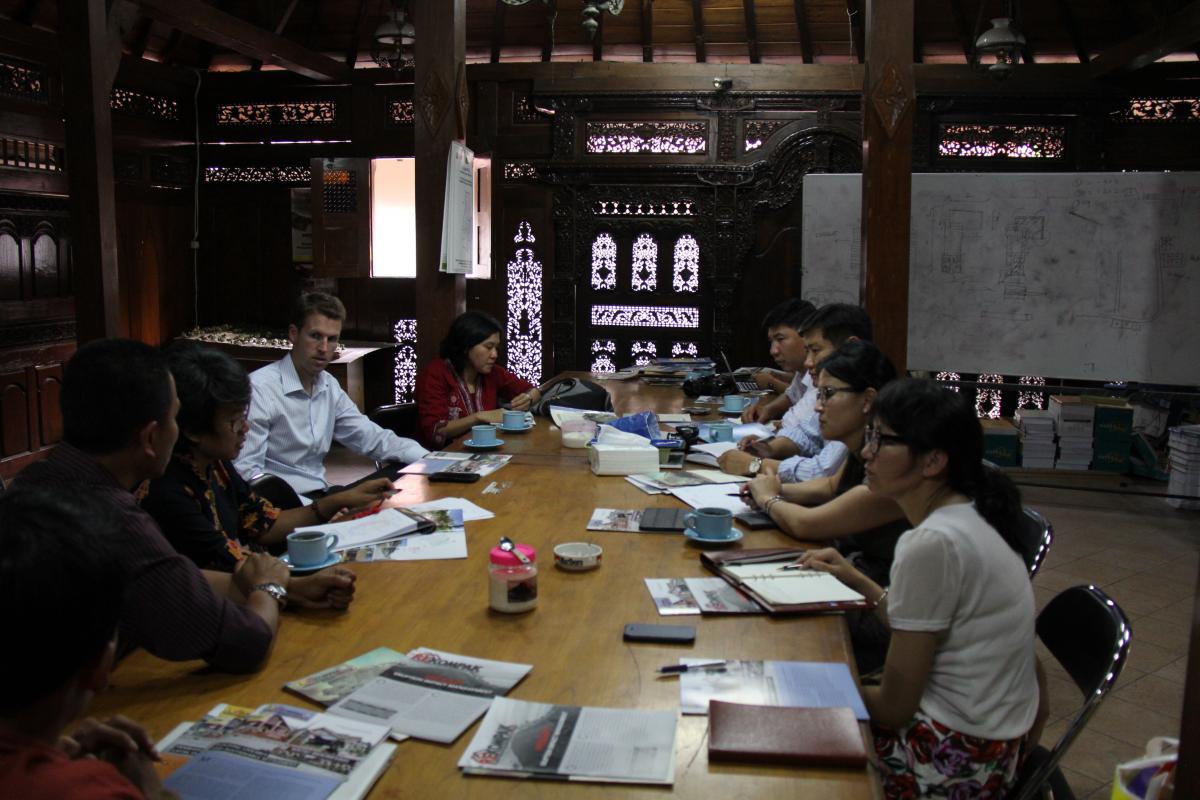Since the 2004 tsunami that ravaged its northwest coast ten years ago, Indonesia has made several strides in mainstreaming disaster risk management (DRM) in its policies and development processes, positioning itself as a model that other vulnerable countries in the region can learn from. Recognizing the value of Indonesia’s growing experience, officials from Mongolia’s National Emergency Management Agency (NEMA) recently visited its Disaster Management Agency, Badan Nasional Penanggulangan Bencana (BNPB)—as well as regional and provincial counterparts and civil society representatives—to learn about the post-Aceh experience in moving from a fragmented disaster response paradigm to a comprehensive, government-wide DRM framework.
This knowledge exchange was conducted under the auspices of the DRM Program in Mongolia, which aims to enhance the Government of Mongolia’s capacity to mitigate and manage the impacts of natural disasters. The program, supported by the Global Facility for Disaster Reduction and Recovery, focuses on strengthening NEMA’s coordination capabilities. The study tour provided an opportunity for NEMA to learn first-hand about Indonesia’s experience in overhauling its disaster management laws and institutional framework. Core among Indonesia’s signature legislative and institutional DRM reforms were:
- A law on disaster management which marked a shift away from disaster response toward comprehensive risk management, reduction, rehabilitation and reconstruction;
- A Presidential Decree creating a national agency for DRM; and
- Mainstreaming disaster management in development planning.
“Aceh was pivotal for Indonesia – the nation undertook not only a rebuilding of infrastructure and private dwellings, but a complete overhaul of the legislative and institutional framework in order to achieve the disaster management, recovery and resilience necessary to protect the Indonesian people and ensure a safe future for the generations ahead,” said Mr.Badral Tuvshin, Deputy Chief, NEMA. “Similarly, NEMA is committed to elevating the discussion of DRM within Mongolia to help protect our people and economy from the inevitability of future disasters.”

Over the course of a week, Mongolian officials engaged in discussions with a range of agencies and community-based organizations across Indonesia which are working on DRM issues:
- In West-Sentul, Java, the officials toured the BNPB’s new National Training Centre.
- In Jakarta, officials met with key representatives of Indonesia’s Badan Perencanaan Pembangunan Nasional—National Planning Agency—(BAPPENAS) to discuss rules governing Indonesia’s budgeting and financing of the nations’ permanent DRM framework.
- In Yogyakarta, officials engaged with a panel from the local DRM platform, Badan Penanggulangan Bencana Daerah Istimewa Yogyakarta (Yogyakarta Special Region Disaster Management Agency, BPBD), discussing its role vis-à-vis regional and national DRM agencies as well as its response to the Mount Merapi’s 2010 eruption.
The Mongolian delegates were greatly impressed by the spirit of the Indonesian people and culture of community-based volunteerism, also known as “Gotong Royong,” a cornerstone of the country’s resilience in the face of ongoing hazards. They had the opportunity to discuss with village elders in remote communities about what living with and preparing for natural hazards means to them.
“It’s as much our responsibility as that of the government in Jakarta, to ensure we understand the risks we face and prepare accordingly” said a full-time female volunteer who helps educate her neighbors about safe evacuation routes.
This knowledge exchange visit also offered valuable insights that will aid NEMA’s ongoing efforts to mainstream DRM into its national framework. Acknowledging the contributions of countries like Indonesia in formulating proactive approaches to natural disasters, through such initiatives GFDRR will continue to support Government of Mongolia as it shifts away from reactive disaster response to a more pre-disaster risk management and resilience-building approach.
